
After a rough 2022, Elon Musk is ready to give Tesla a much-needed hype boost. The company suffered a staggering decline in its market value last year, but has somewhat recovered in the past two months. It’s facing growing competition from traditional automakers, including Chinese companies like BYD, which sold more electric vehicles globally than Tesla in 2022. The CEO himself has also been a drag on the company, as he’s become more open about his right-wing political views and has failed to keep Tesla’s vehicle lineup competitive as more options enter the market.
A shot in the arm may be coming for Tesla enthusiasts feeling jilted by their Technoking and investors wanting to see their holdings start to soar again. Recognizing the need for some good press, Musk set Tesla’s next Investor Day for March 1 and announced it would mark the unveiling of his third master plan, which will lay out “the path to a fully sustainable energy future for Earth.” After a detour into the messy world of social media, Musk was back to save the world once again.
The master plans are Musk’s opportunity to explain his vision for Tesla’s future strategic direction and try to deflect criticism for some of the company’s actions. But as he seeks to create a new spectacle (that the media will surely play their part in amplifying), there’s a bigger question to consider: given Musk’s history of overpromising and underdelivering, should we really take anything he says at the Investor Day seriously? It’s worth taking a tour through the first two Master Plans to help answer that question.
The Secret Tesla Motors Master Plan
In 2006, Elon Musk published “The Secret Tesla Motors Masterplan” to outline how the company would go from building a luxury sports car to an affordable, mass-market vehicle. It was two years after he invested in Tesla, two years before he’d become CEO, and three years before he’d retroactively make himself one of the company’s co-founders.
In the Master Plan, Musk outlined a vision that’s easily recognizable to anyone with even the slightest knowledge of the company. “When someone buys the Tesla Roadster sports car, they are actually helping pay for development of the low cost family car,” he wrote. It was a feel-good message for the rich people (like himself) that he was pulling into the vision of automotive electrification: they weren’t just buying another sportscar designed according to Musk’s personal preferences; they were funding the solution to climate change. It was a great way to sell a product to wealthy people who want to feel good about themselves without having to reckon with how they’re part of the problem, and aligned with the neoliberal climate narrative that was dominant at the time: that the solution was more about personal consumption habits like buying electric cars, changing lightbulbs, and recycling than structural changes that would require government action to realize.
The bullet points of the master plan went like this:
- Build sports car
- Use that money to build an affordable car
- Use that money to build an even more affordable car
- While doing above, also provide zero emission electric power generation options
Let’s put aside for a moment how Musk now says the world needs more oil and gas alongside renewable energy. How did he actually do on this master plan? It’s a mixed grade. There’s no question that Tesla has been able to expand its vehicle range from the Roadster to the Model S sedan, Model X SUV, Model Y crossover, and Model 3 sedan, with vehicles becoming more somewhat attainable over time. But the “low cost family car” never arrived, and was removed from the vision in the second master plan. (More on that in a minute.)
In Ludicrous: The Unvarnished Story of Tesla Motors, Edward Niedermeyer describes how Tesla had promised the US Department of Energy it would release a version of the Model S that would cost $50,000 was part of the conditions for a 2010 loan that got it through a particularly difficult time. It never fulfilled that obligation. Later, the Model 3 was supposed to have a base price of $35,000, but other than a brief period where the company sold a barebones model to claim it met that target, the actual price of the vehicle has been much higher. After recent price cuts to stay competitive and spur demand, the Model 3 starts at $42,990 in the United States, but most buyers will end up paying much more once they add other options.
Niedermeyer makes an important point about this period that gets reflected in the second master plan. Before 2013, Tesla was legitimately trying to achieve the goal Musk set out of using expensive vehicles to fund cheaper models, but it wasn’t working out as planned. The company was constantly stretched for cash as costs came in higher than projected and vehicles kept getting delayed, in large part because Musk’s aesthetic choices were expensive, difficult to engineer, and a challenge to mass produce without a lot of flaws. It’s part of the reason Teslas are known for their poor quality to this day. But in 2013, after constantly having to scrape by, ask customers to prepay for vehicles, and seek additional investment so the company could keep going, Musk found the solution to Tesla’s money woes: making big promises it may never fulfill, but that would get his cult and investors (two circles with quite a lot of overlap), not to mention the media, very excited.
After promising “zombie-apocalypse-proof” charging stations, battery-swap stations, a three-year timeline for Autopilot to work in 90% of road conditions, and overstating the Model S’s safety rating, Niedermeyer writes that the hype they generated “cemented the lesson that Musk had learned during the preceding crises: his visions for the future were his most marketable product, and they were in no way limited by reality.” In 2013, Tesla’s share price went into overdrive and Musk never looked back. That became clear in his second master plan.
Master Plan, Part Deux
Elon Musk’s next master plan arrived ten years later in 2016, with the artistic flourish of being labeled “part deux,” but it looked quite different from the company’s previous strategy. Reflecting the big promises that had been fueling Tesla for several years at that point, it laid out a much more expansive vision for the company — one that Musk has abjectly failed to follow through on, despite all the hype.
So, in short, Master Plan, Part Deux is:
- Create stunning solar roofs with seamlessly integrated battery storage
- Expand the electric vehicle product line to address all major segments
- Develop a self-driving capability that is 10X safer than manual via massive fleet learning
- Enable your car to make money for you when you aren't using it
Only one of the four points in the plan focused on building electric vehicles any longer; instead, autonomous driving was much more central and energy generation got a prominent place. I’ll address those pieces, but I want to begin with the second point, as it’s the most direct extension of the earlier vision for the company. In the second master plan, Musk wrote,
Today, Tesla addresses two relatively small segments of premium sedans and SUVs. With the Model 3, a future compact SUV and a new kind of pickup truck, we plan to address most of the consumer market. A lower cost vehicle than the Model 3 is unlikely to be necessary.
This is incredibly telling: the early plan was to create a truly “low cost” electric vehicle, but by 2016 that was out the window. Musk explained the company wouldn’t need a cheaper vehicle than the Model 3 — which I’ve already noted has not hit the price target Musk set for it — and that was because of the fourth point: that Tesla vehicles would be able to be deployed as “robotaxis,” earning income for their drivers. Musk claimed one million robotaxis would be deployed in 2020, yet in 2023 they’re still nowhere to be found and both the Autopilot and Full Self-Driving systems are under increasing regulatory scrutiny. So much for the promise made to all those rich early buyers, though I’m sure their self-image of having helped save the planet despite hoarding massive wealth and flying around the world in private jets wasn’t affected.
Musk also said more vehicles were coming: the Model 3, the Model Y, the Cybertruck, and he mentioned the Tesla Semi and a “high passenger-density urban transport” that “should be ready for unveiling next year” in 2017. The bus never arrived. Instead, Musk began publicly trashing transit in 2017, telling Wired “public transport is painful. It sucks,” as he rolled out his vision for the Boring Company. That effort proved to be an overhyped distraction that hasn’t solved traffic congestion anywhere and has only produced an amusement ride in Las Vegas for the Tesla cult while giving some local governments an excuse not to make real transit investments.
The Tesla Semi has been plagued by delays, spotted broken down on several occasions, and has been criticized by truckers for not understanding their needs. The Cybertruck has suffered a not dissimilar fate, with production timelines slipping from 2021 to early 2024, questions about whether it will even be legal in the EU and Australia, all while electric models with more attractive form factors like the Ford F-150 are already on the market (and selling well).
Tesla has struggled to deliver on its lineup, let alone refresh older, stagnating models. In the plan, Musk wrote that to scale up production, Tesla was heavily focused on “designing the machine that makes the machine — turning the factory itself into a product.” This refers to the company’s efforts to automate final vehicle assembly, which were an abject failure and contributed to its “production hell” because Musk refused to learn from the experience of other automakers. In 2018, he admitted, “Excessive automation at Tesla was a mistake. To be precise, my mistake.”
But autonomy wasn’t just a failure in manufacturing; it was also a failure in driving automation. Tesla has continually failed to meet the milestones Musk set for Autopilot and Full Self-Driving. California regulators joined those in Germany last year in finding that Tesla misled consumers on those features’ capabilities, and the company has previously been “scolded” by the US National Highway Traffic Safety Administration for “misleading statements” about the safety of Tesla vehicles. Specifically, the company used data from the agency to make misleading claims about the likelihood of Autopilot crashes. Tesla is facing regulatory probes and legal suits over crashes that happened while Autopilot was engaged, and it recently paused the rollout of its Full Self-Driving beta after a recall of 362,000 vehicles. The plan to create a self-driving system that would upend transportation, let alone allow people to have their own robotaxis, has not been realized, and most other companies working on the technology have moderated their statements in a way Tesla has not.
Finally, the point about solar energy was directly connected to Tesla’s acquisition of SolarCity, which shareholders later sued over. (The court ruled in Musk’s favor, but not without some criticism of how it was undertaken.) In October 2016, Musk showed off the company’s Solar Roof on the set of Desperate Housewives, but later reporting by Fast Company revealed it was all staged — the tiles weren’t a working product. That seems to be have been a trend at the time: a 2016 Autopilot demo video that generated a lot of hype also turned out to have been staged. Once some Tesla solar panels were actually installed on Walmart roofs, the retailer ended up suing because they caught fire at seven of its stores. Ultimately, this too was a big promise that Musk couldn’t realize, but for a while it did help hype up his followers and give investors an attractive narrative to boost the share price.
Master Plan, Part Deux exemplifies how Tesla went from a company that sold electric cars to a company that sold hyped up visions of the future it continually failed to deliver on. Yet, the lesson it took away was not to pull back on those false claims, but to double down because it rarely faced any consequences for not following through. The planned release of a third master plan should prompt reflection on that phase of the company and whether it can deliver on future promises, but it remains to be seen to what extent that will be done by the media, investors, and the cult that’s happy to be constantly lied to by their idol.
Master Plan 3
This brings us to Master Plan 3, due to be detailed on March 1, less than seven years after the last one. The big question is not only what it will contain, but also how it will balance the challenges Tesla faces in the electric vehicle market with the hyped up distractions that appeal to Musk and make the company seem like something more, even as they divert resources from actually addressing the supposed core business.
To that end, there are a few things we can comfortably expect. First, the plan for a “low cost” Tesla model will reappear as the company needs to address a market segment that isn’t only being targeted by North American automakers, but will be huge in other parts of the world, particularly in China. GM is already promoting a $30,000 Chevy Equinox EV that will come out this year, while Chinese automakers are going international with much cheaper EV models.
Second, Musk will need to show Tesla can actually deliver the Cybertruck, the long-promised refreshed Roaster, and potential refreshes of other models. In truth, the Cybertruck should be canceled and replaced with something that will actually have a market beyond Tesla fanboys, but that won’t happen, so it at least needs to make it to production. Delivering on those vehicles won’t be an easy feat though. The company’s Berlin and Austin factories are reportedly losing “billions of dollars,” there have been issues with the factory in Shanghai, and now it’s building another factory in Mexico. In response to the latter announcement, Niedermeyer commented on Twitter, “Tesla's problem is not a lack of factories, it's a lack of product pipeline for the factories it already has.” Not to mention being able to bring that pipeline to production.
Third, expect a renewed focus on solar panels and energy storage after the struggles with the solar roof and the limited supply of Powerwall batteries. These are very competitive markets that plenty of companies are already operating in, and it’s unclear how Tesla has much to contribute beyond continuing to attempt a business strategy to get Tesla vehicle owners to buy an energy system from a vertically integrated supplier. In 2021, Tesla only held 2% of the rooftop solar market in the United States. It’s a monopoly play that seems a bit too late.
Finally, you can be sure that autonomous driving will show up as it’s still a big part of the Tesla sales pitch, even though it’s been defined by a decade of failing to live up to Musk’s promises. Robotaxis are also likely to make another appearance, when he should admit they’re simply not happening. Musk claims this plan will tie Tesla in with some of his other companies, like SpaceX and the Boring Company, and who knows if that stupid robot will make a reappearance.
The promises made at the Investor Day will show whether Musk is serious about taking on the real challenges Tesla faces, or is simply looking to fuel the hype and artificially boost the share price once again. It will also give us an indication of whether people still trust Musk after he’s spent months boosting right-wing conspiracy theories.
Elon Musk played an important role in using his public persona to get Tesla to this point despite the baggage he’s saddled it with. A competent operator would recognize that he’s not the best person to guide it through its next stage of existence, but a narcissist like Musk is unlikely to admit that and the board he’s stacked with people who depend on him will never force him out. So, we’ll see what he has to say, and likely take most of it with a grain of salt.


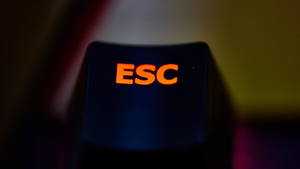

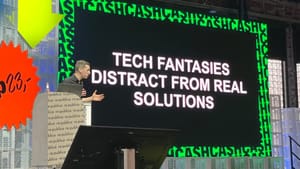
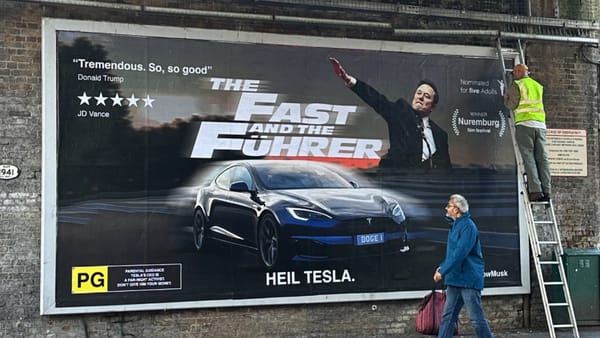
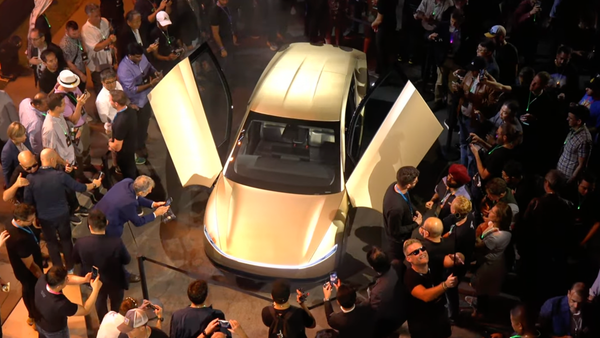
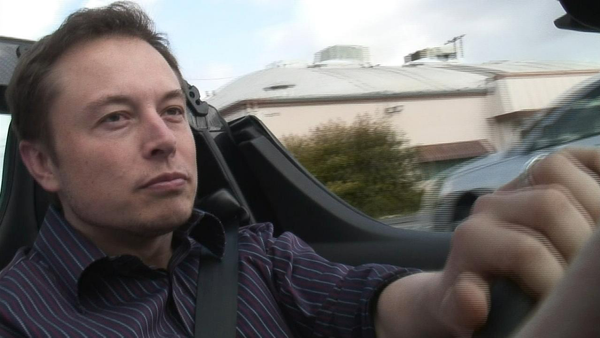
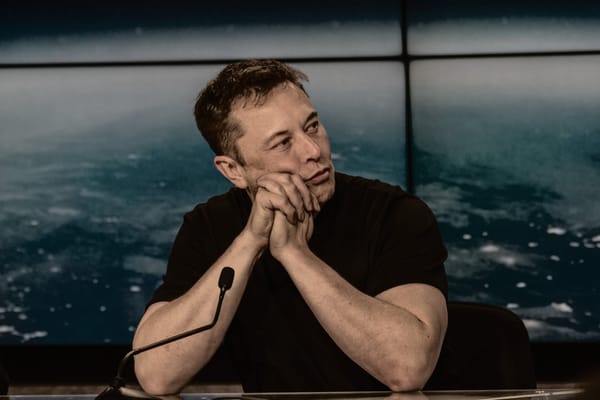
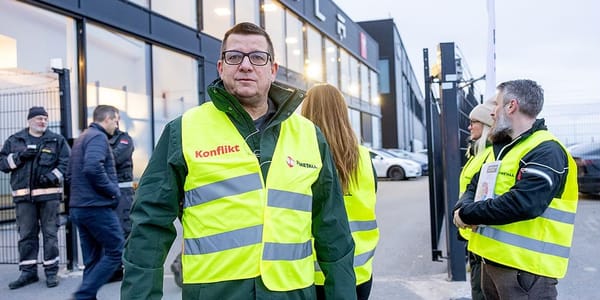
Member discussion